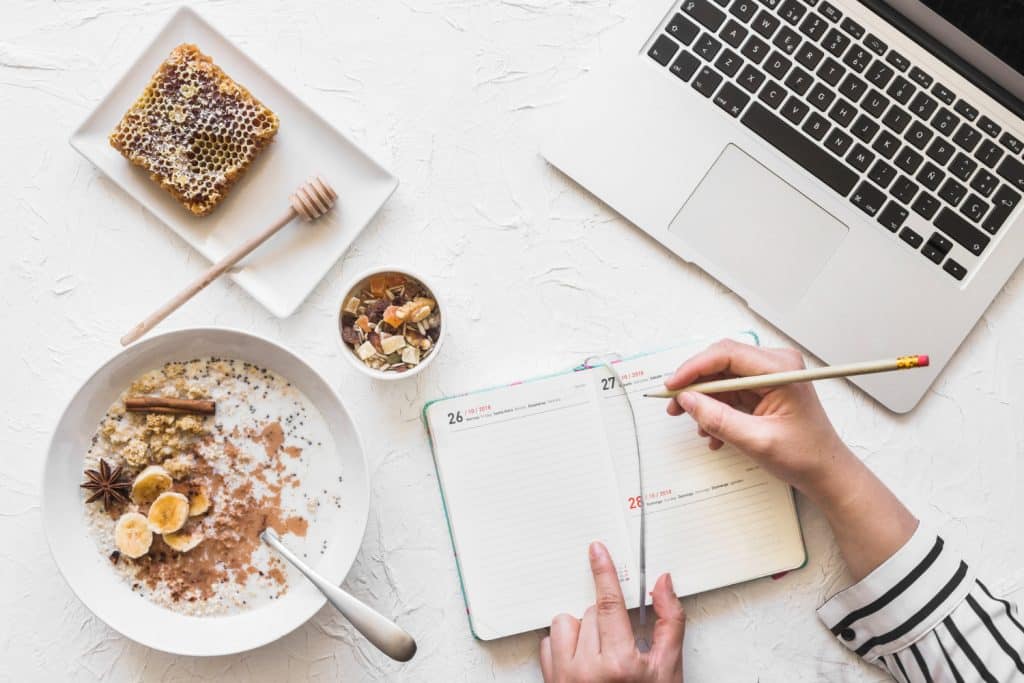The Perfect Daily Routine: How to Structure Your Day for Success and Well-being

Why Daily Routines Matter
A consistent and well-structured daily routine can transform your life. In this blog post, we’ll explore how building healthy daily habits can enhance productivity, support mental and physical health, and reduce stress. Whether you’re an early bird or a night owl, creating a rhythm that aligns with your natural energy patterns helps you move through the day with focus and ease.
Daily routines offer more than productivity—they foster stability, mental clarity, and a sense of control over your day. With a structured plan, you eliminate the chaos of decision overload and free up your energy for what matters most. You’ll be surprised how simple changes can lead to a happier, more fulfilled life.
The Science Behind an Effective Daily Routine
Aligning with Your Circadian Rhythm
Your body operates on a 24-hour cycle known as the circadian rhythm, which controls your sleep-wake patterns. Matching your routine to these natural energy peaks and dips can help you feel more awake during the day and sleep better at night. Your alertness, digestion, and cognitive function all fluctuate according to this rhythm. Honor it, and your routine becomes not just manageable—but powerful.
The Power of Predictability
Predictable routines lower anxiety and improve focus by reducing decision fatigue. When your mind knows what to expect, you can concentrate better and stay calm throughout the day. You reduce uncertainty, which allows your brain to conserve energy and redirect it to higher-order thinking tasks, creativity, and problem-solving.
Reducing Mental Load
We make thousands of decisions daily. A solid routine minimizes choices, freeing up mental energy for creative thinking and essential tasks. This mental clarity fosters a sense of direction and purpose, and helps you tackle bigger goals without getting overwhelmed by small, repetitive decisions.

Morning Routine: Start Strong for a Productive Day
Wake Up at a Consistent Time
Aim to wake between 6–8 a.m., even on weekends, to help your internal clock stay balanced. A regular wake time helps regulate hormones like cortisol and melatonin, supporting a smooth transition between sleep and wakefulness. Over time, your body learns to wake up naturally, improving your energy and mood.
Hydrate and Move
Drink a glass of water and do light movement such as stretching or a short walk to activate your body and mind. Rehydrating after sleep jump-starts your metabolism and flushes out toxins. Morning movement also boosts circulation, which increases oxygen delivery to the brain and enhances focus.
Practice Mindfulness
Begin your day with 5–10 minutes of mindfulness—deep breathing, journaling, or gratitude practice—to set a positive tone. Research shows that mindfulness lowers cortisol levels, supports emotional regulation, and enhances attention span. A few quiet moments in the morning can shift your mindset for the better.
Focus on Important Tasks First
Use your brain’s peak energy hours to tackle the day’s most challenging or creative work. Limit distractions and protect your deep work time. Block off 60–90 minutes for focused output and avoid multitasking. This window is critical for high-performance professionals and creatives alike.
Midday Routine: Sustain Energy and Focus
Eat a Balanced Lunch
Choose meals with lean protein, healthy fats, and complex carbs to maintain energy levels—think quinoa salad or grilled chicken with veggies. Avoid heavy, greasy, or processed meals that can cause fatigue. Consider timing your lunch between 12–1 p.m. for optimal digestion and rhythm alignment.
Take Breaks
Recharge with short 5–10 minute breaks every hour. Stretch, walk, or get sunlight to reset your focus. Studies show that microbreaks prevent burnout and help maintain performance throughout the day. Use tools like the Pomodoro Technique to structure these pauses.
Refocus Techniques
Switch locations, adjust posture, or do breathing exercises to revive your attention. Small rituals can prevent mental burnout. Consider a quick walk outdoors, changing work environments, or a cold splash of water on the face to reset your energy.
Afternoon Routine: Stay Productive During the Dip
Handle Admin and Collaboration
Use this lower-energy period to manage emails, meetings, and collaborative tasks. These require less solo focus. Reserve these tasks for the hours after lunch—roughly 2–4 p.m.—when creative output is harder to sustain but communication is still possible.
Try Task Batching
Group similar tasks (e.g., replying to messages or filing paperwork) for smoother, more efficient workflows. Task switching burns valuable energy and reduces performance. Batching lowers the time spent transitioning between tasks and boosts efficiency.
Plan for the Evening
Wrap up by outlining tomorrow’s priorities or clearing your workspace, signaling the end of the workday. This creates a mental barrier between work and leisure and promotes a smoother start the next morning.
Evening Routine: Wind Down for Better Sleep
Set Work-Life Boundaries
Shut off work devices and tidy your space at a consistent time to signal relaxation mode. Let colleagues and family know your cut-off time to avoid interruptions. Your evening should be a sanctuary, not an extension of your office.
Engage in Relaxing Activities
Read, stretch, or enjoy a hobby. Avoid stimulating screens and conversations. Explore low-light hobbies like puzzles, crafts, or audio books. Activities that don’t involve screens or adrenaline help your nervous system shift toward rest.
Prepare for Sleep
Create a calming bedtime ritual—dim the lights, drink herbal tea, or write in a journal. Go to bed at the same time every night. Make sure your room is cool, dark, and quiet. Investing in blackout curtains, noise machines, or white noise apps can improve your sleep hygiene.
Tips for Staying Consistent
Follow the 80/20 Rule
Perfection isn’t required. Stick to your routine 80% of the time for noticeable results. Aim for consistency over intensity—one missed day won’t ruin your progress. The goal is to build identity-based habits that feel natural over time.
Be Flexible
Life happens. Focus on maintaining core habits—like hydration, movement, and sleep—when disruptions occur. Adapt your routine rather than abandoning it. Even 15 minutes of mindful effort can sustain momentum.
Use Tools and Apps
Support your habits with reminders, habit trackers, or calendar alerts. Choose what fits your lifestyle best. Apps like Habitica, Todoist, or Google Calendar can keep your schedule aligned and your motivation high.
Customizing Your Routine
Know Your Energy Peaks
Track how you feel at different times of the day to identify your natural high-performance windows. Use a simple journal or app to log your alertness, mood, and productivity. After a week or two, patterns will emerge that help you plan better.
Experiment and Adjust
Test different routines and refine what works best for you. A perfect routine is personal and evolving. Try out various wake times, work blocks, and evening rituals. Don’t be afraid to pivot if something isn’t working.
Conclusion: Create a Day That Works for You
A great daily routine is a foundation for long-term success and well-being. Start with small, sustainable habits, stick to the basics most of the time, and give yourself room to adjust. The perfect day isn’t about perfection—it’s about intentionality, balance, and growth.
When you align your day with your body’s rhythms and values, everything becomes easier—your health improves, stress decreases, and your goals become more attainable. Make the time to design your ideal day, and watch your life transform.
Keywords for SEO Optimization: daily routine, productivity tips, morning routine, circadian rhythm, healthy habits, work-life balance, mindfulness, time management, sleep hygiene, stress relief







